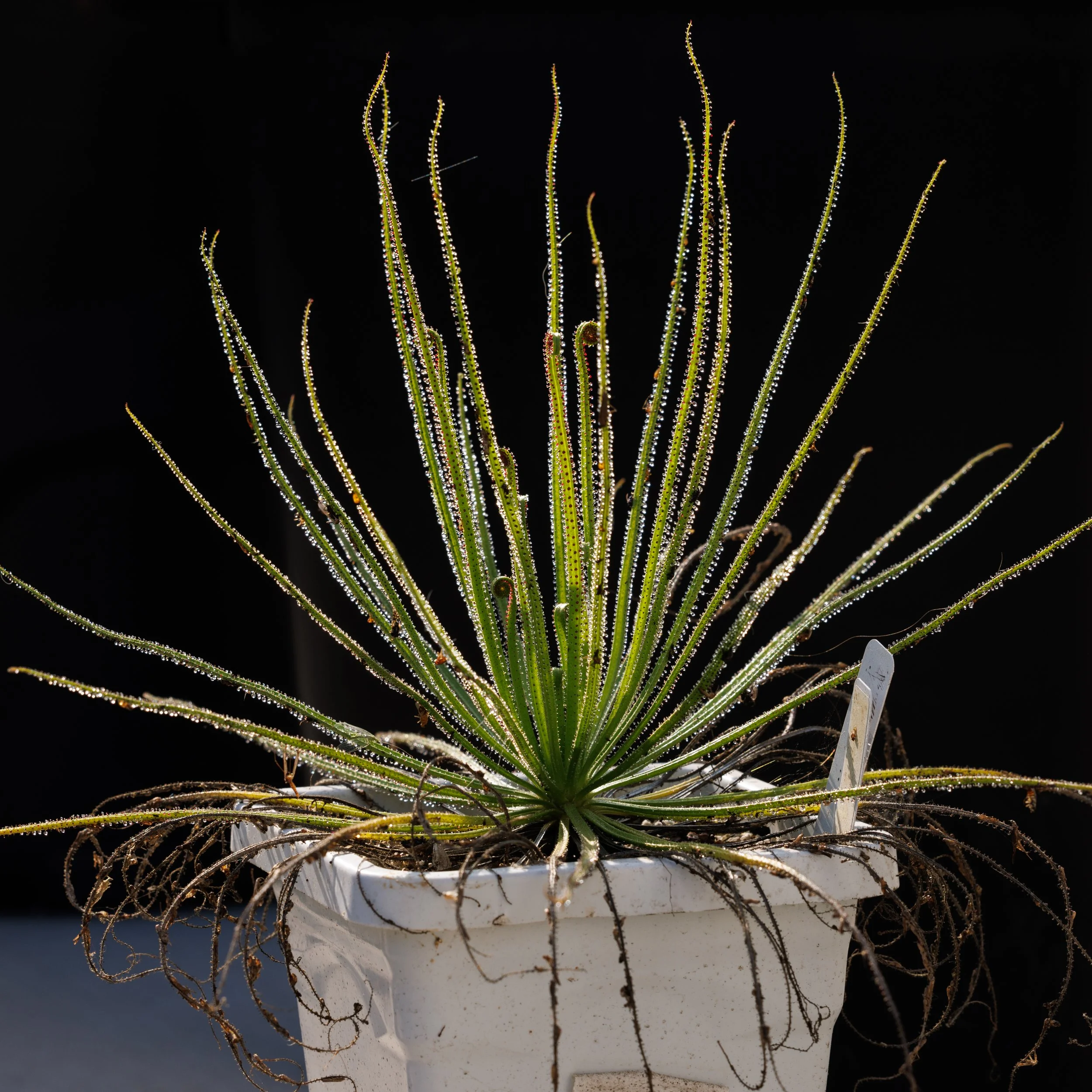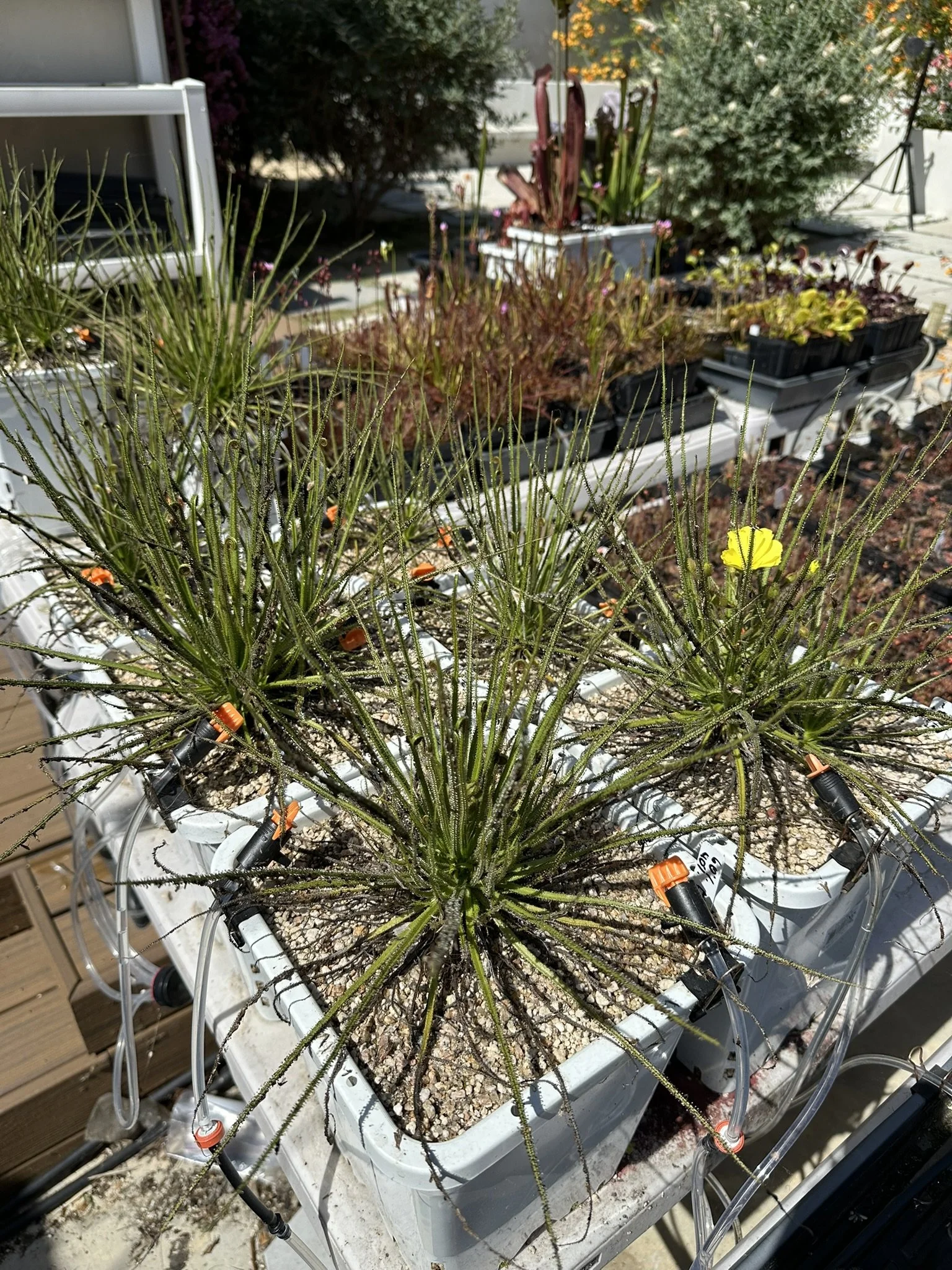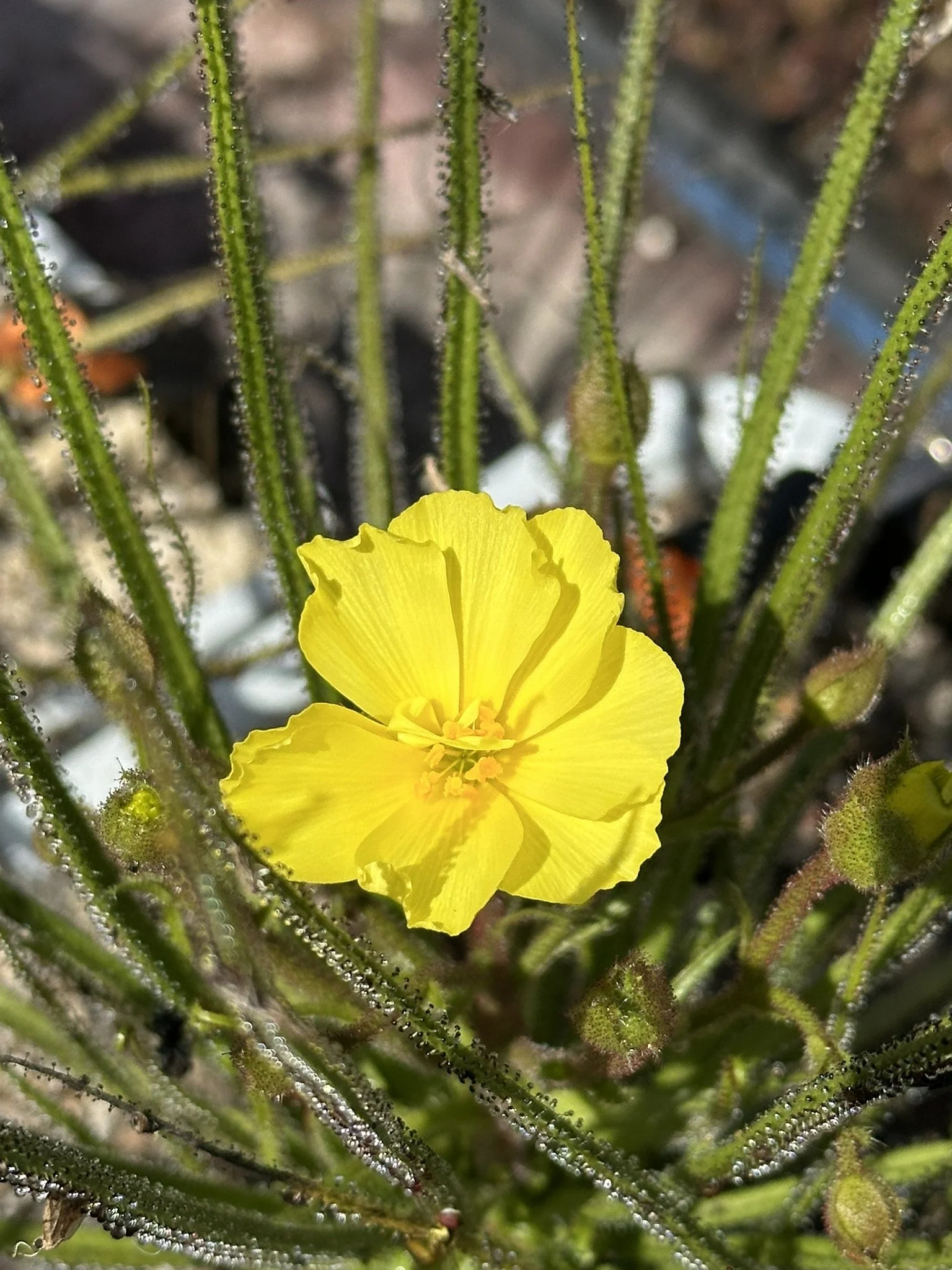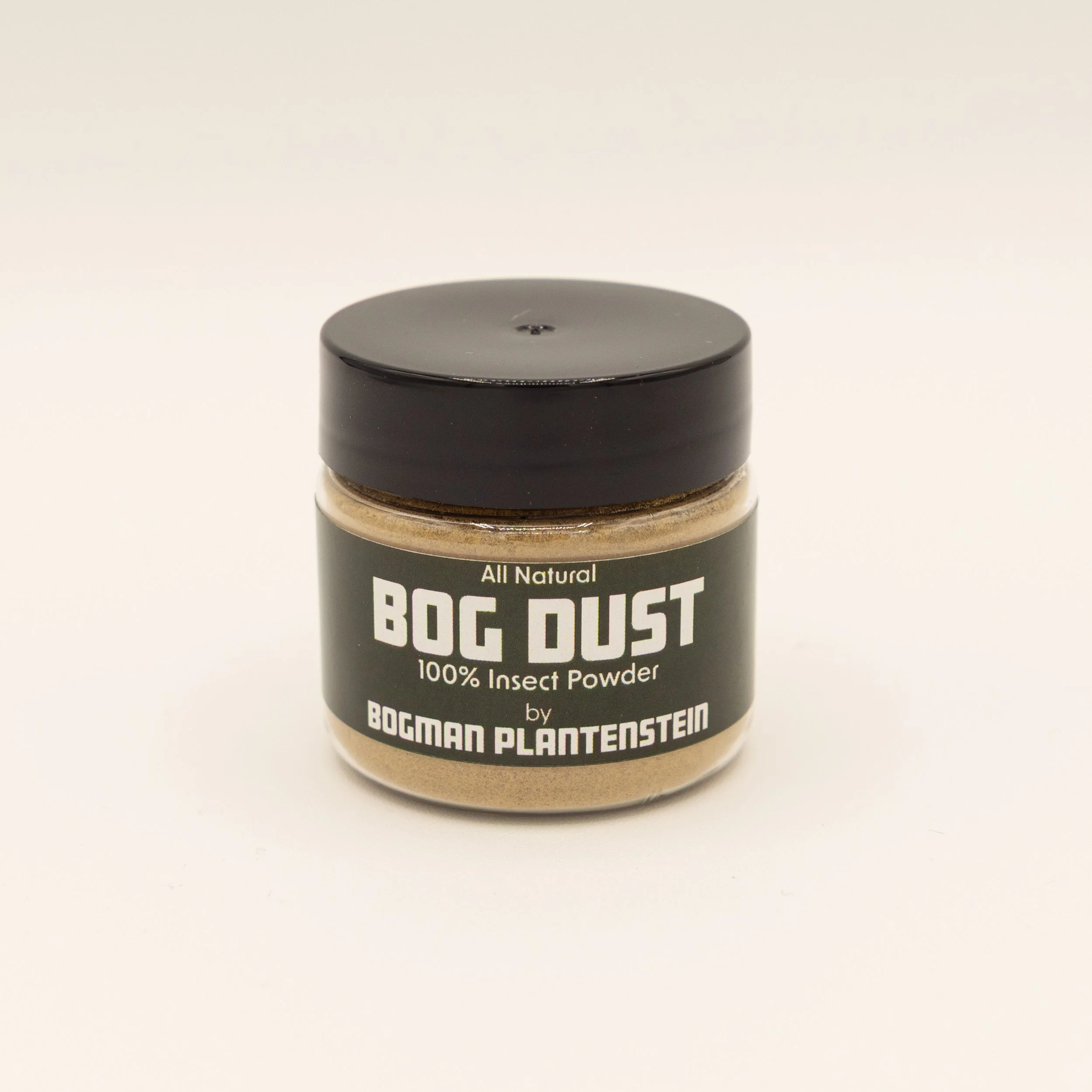 Image 1 of 8
Image 1 of 8

 Image 2 of 8
Image 2 of 8

 Image 3 of 8
Image 3 of 8

 Image 4 of 8
Image 4 of 8

 Image 5 of 8
Image 5 of 8

 Image 6 of 8
Image 6 of 8

 Image 7 of 8
Image 7 of 8

 Image 8 of 8
Image 8 of 8









SEEDS - Drosophyllum lusitanicum
Description
Dewy Pines (Drosophyllum lusitanicum) are some of the best flycatchers of all the carnivorous plants while also smelling like honey! They have thin, green leaves with red, mushroom-shaped dew glands that produce a viscous, sticky substance like sundews. However, Dewy Pines are only distantly related to sundews, flytraps, and Asian pitcher plants (Nepenthes).
If left outdoors in bright sun, they can catch incredible quantities of insects — sometimes every leaf of the plant is covered in prey. They can rapidly grow to over 1’ in diameter in under a year, maxing out at around 2’ in diameter. Looking almost like a glistening tuft of pine needles, Dewy Pines glisten in the sun and emit a pure, sweet, syrupy (and very appetizing) aroma. They require high amounts of sun or intense LED grow lights. Unlike many tropical or bog carnivorous plants, these grow in gravely, coastal hills in Portugal, Spain, and Morocco that get regular morning fog.
Dewy Pines can be tricky at first, but manageable once their basic needs are met. It can grow from seed to maturity in roughly a year, and then will produce large, brilliant yellow flowers. These will produce hard black seeds. Germination can take from a few weeks to several months. When conditions are right, they will germinate in bunches. I have had them germinate at different times of the year, especially in mild weather or after a bit of rain. Treatment with GA3 can help increase germination rates but is not necessary.
Seeds should be planted on top of a granular, minimally organic mix that can retain moisture — the seeds want to be consistently moist to germinate. Nestle them into the granular bits to ensure they stay moist and don’t blow away in wind or rain, and put them out in the sun. Either plant them in large, deep pots (>8” depth) as their final home or start them in peat pots that are at least 3” deep.
Once the plant has grown to 2-4” in diameter, plant the entire peat pot into its final pot in a well-draining, inorganic soil. While young plants, they can be kept wet on the tray system but should be kept drier as they get larger to avoid roots sitting in water.
Packs will have 10+ fresh seeds.
Growing Information
Climate: Temperatures of 30F- 90F are fine. They may become stressed during very hot conditions, but can recover once temperatures cool down to below 85F. While they can survive light frost, it is best to keep them above freezing. Low humidity is best.
Lighting: Full sun or at least 40W per sq ft of high quality LED grow lights. Very bright light is essential for survival. These cannot survive with low light – growing them outdoors in full sun is best.
Water: Lightly top water the surface of the pot to maintain moist conditions. Dewy pines want well draining, airy, moist soils (not sitting in trays of water). Give them slightly more water when small (<5” tall) and progressively less water as they grow larger. When first planted, give extra water for a couple weeks as the roots establish themselves in the new soil. Only use distilled, reverse osmosis, or rainwater because tap water is toxic to carnivorous plants due to high mineral content and chlorine.
Soil: A granular, well draining mix like 40% decomposed granite: 60% perlite (maybe a pinch of peat but not sure if necessary). The mix should be well-draining, airy, and inorganic — they are not picky as long as they get enough sun and consistent moisture levels.
Feeding: These can be fed with Insect Powder slurry applied to the underside of the leaves but do best when catching bugs outdoors.
Description
Dewy Pines (Drosophyllum lusitanicum) are some of the best flycatchers of all the carnivorous plants while also smelling like honey! They have thin, green leaves with red, mushroom-shaped dew glands that produce a viscous, sticky substance like sundews. However, Dewy Pines are only distantly related to sundews, flytraps, and Asian pitcher plants (Nepenthes).
If left outdoors in bright sun, they can catch incredible quantities of insects — sometimes every leaf of the plant is covered in prey. They can rapidly grow to over 1’ in diameter in under a year, maxing out at around 2’ in diameter. Looking almost like a glistening tuft of pine needles, Dewy Pines glisten in the sun and emit a pure, sweet, syrupy (and very appetizing) aroma. They require high amounts of sun or intense LED grow lights. Unlike many tropical or bog carnivorous plants, these grow in gravely, coastal hills in Portugal, Spain, and Morocco that get regular morning fog.
Dewy Pines can be tricky at first, but manageable once their basic needs are met. It can grow from seed to maturity in roughly a year, and then will produce large, brilliant yellow flowers. These will produce hard black seeds. Germination can take from a few weeks to several months. When conditions are right, they will germinate in bunches. I have had them germinate at different times of the year, especially in mild weather or after a bit of rain. Treatment with GA3 can help increase germination rates but is not necessary.
Seeds should be planted on top of a granular, minimally organic mix that can retain moisture — the seeds want to be consistently moist to germinate. Nestle them into the granular bits to ensure they stay moist and don’t blow away in wind or rain, and put them out in the sun. Either plant them in large, deep pots (>8” depth) as their final home or start them in peat pots that are at least 3” deep.
Once the plant has grown to 2-4” in diameter, plant the entire peat pot into its final pot in a well-draining, inorganic soil. While young plants, they can be kept wet on the tray system but should be kept drier as they get larger to avoid roots sitting in water.
Packs will have 10+ fresh seeds.
Growing Information
Climate: Temperatures of 30F- 90F are fine. They may become stressed during very hot conditions, but can recover once temperatures cool down to below 85F. While they can survive light frost, it is best to keep them above freezing. Low humidity is best.
Lighting: Full sun or at least 40W per sq ft of high quality LED grow lights. Very bright light is essential for survival. These cannot survive with low light – growing them outdoors in full sun is best.
Water: Lightly top water the surface of the pot to maintain moist conditions. Dewy pines want well draining, airy, moist soils (not sitting in trays of water). Give them slightly more water when small (<5” tall) and progressively less water as they grow larger. When first planted, give extra water for a couple weeks as the roots establish themselves in the new soil. Only use distilled, reverse osmosis, or rainwater because tap water is toxic to carnivorous plants due to high mineral content and chlorine.
Soil: A granular, well draining mix like 40% decomposed granite: 60% perlite (maybe a pinch of peat but not sure if necessary). The mix should be well-draining, airy, and inorganic — they are not picky as long as they get enough sun and consistent moisture levels.
Feeding: These can be fed with Insect Powder slurry applied to the underside of the leaves but do best when catching bugs outdoors.


